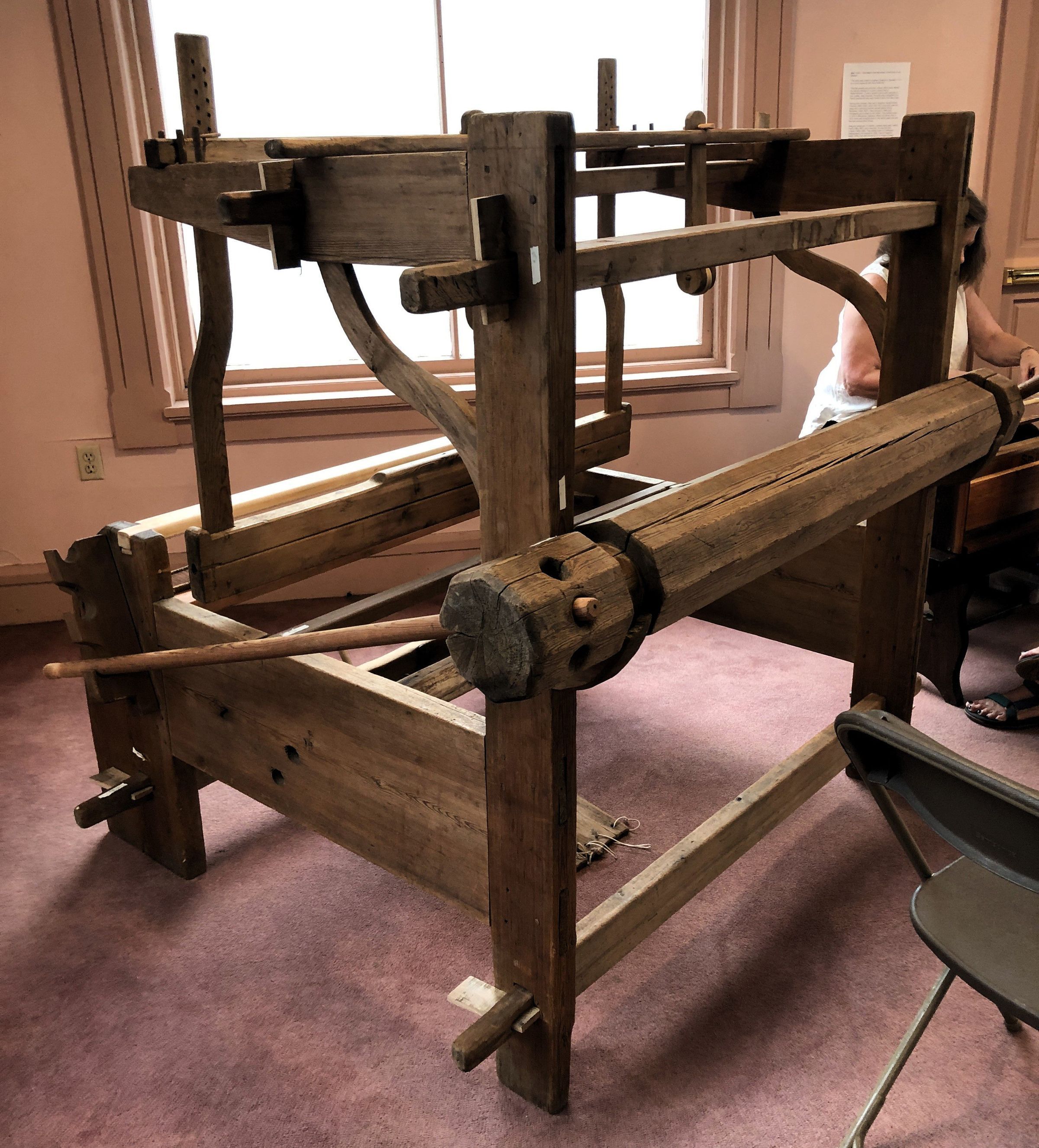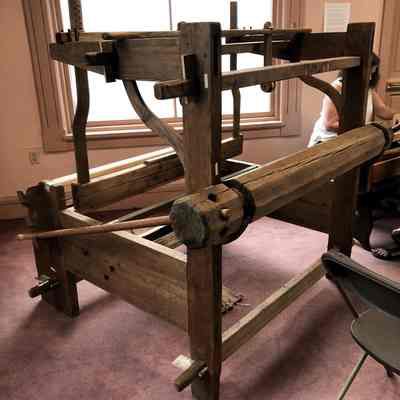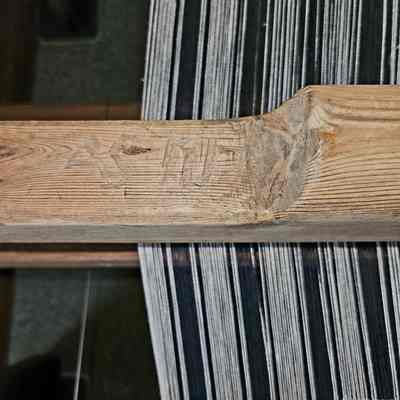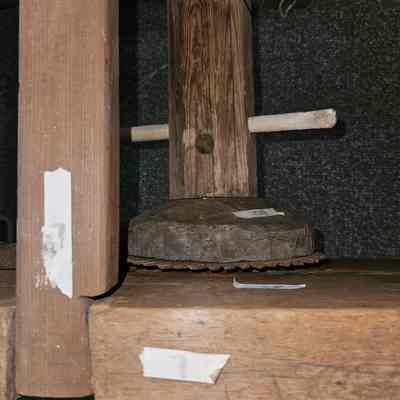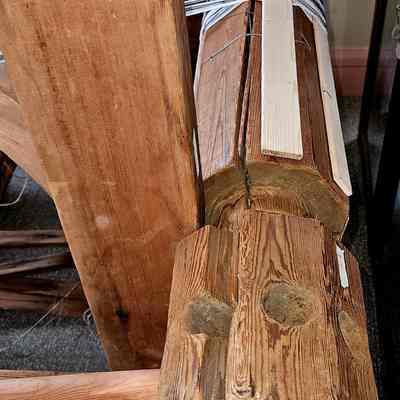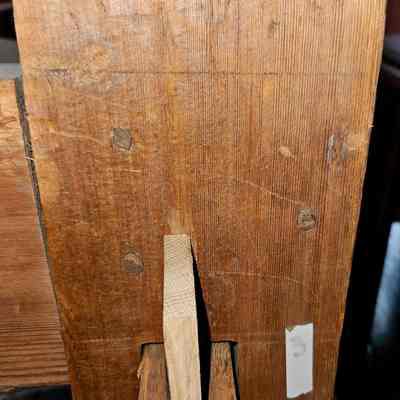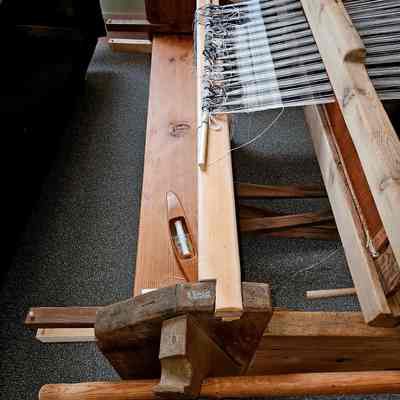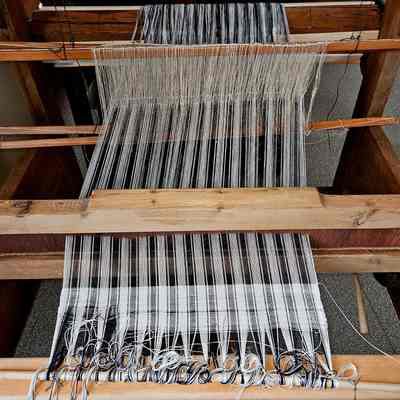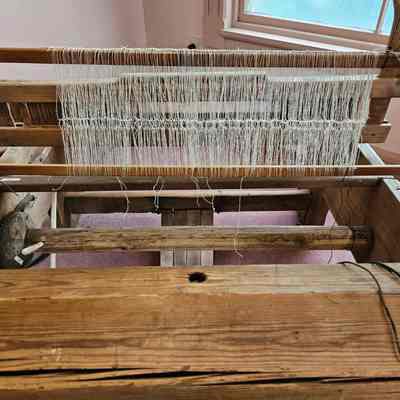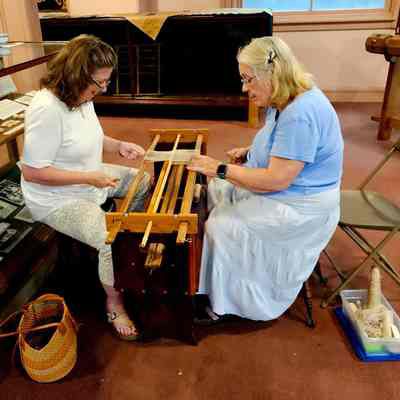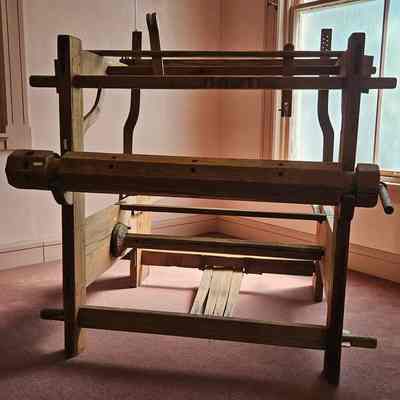Name/Title
Barn LoomEntry/Object ID
2024.83.01Description
18th-century Swedish wooden barn loom. Marked with the initials AS and the date 1717. Held together with wooden pegs, joints, and wedges. One iron or steel gear. Working condition. The loom as found was nearly complete. Museum staff replaced a splintered front beam and some wedges; constructed some new wedges, a new lever bar, and new seat, string heddles, and a few other parts. The loom was minus a reed, so Museum staff inserted an antique wooden reed manufactured in the 19th century.Use
Weaving thread or yarn to make cloth.Context
The following handwritten document was found in the Museum's files, ostensibly written by the donor: "The loom was made in southern Dalarna in Sweden 1717 by a local carpenter with the initials AS. The first owners ar[e] unknown. About 1840 it was owned by a family Dehlgren in a town named Sala in Vasfermanland. It was a welthy [sic] family with interests in corn, lumber and charcoal. The wife was daughter to a french blacksmith who was invited to the mine town Sala. Among the children they had a dauter [sic] named Anna Fredrika (1845-1894). She met, fell in love and run away with a traveling teatcher [sic] named Jakob Petrus Rentstrom (1846-1927)[.] They married 1864 and imediatly [sic] got skolded [sic] by her father. They setled [sic] down 1872 in Billingsfors, Dalsland, When the father died 1873 Anna was accepted in the family again and got this loom among other things. Anna and Jakob got 10 children, number eight was Fredrik Feofil (1880-1967), also a teacher. He married Edit Lovgren (1882-1955). They setled [sic] down in Frollhaltan, Vastergotland and married 1902. One of Fredriks [sic] sisters Sofia lived with the family for a couple of years and she brought the loom with her. When she left she put it in the attic, where I found it 1974, when the children of Edit and Fredrik devided [sic] the home. Number four of the six children is my mother Astrid." The above was written in blue ballpoint pen on lined notebook paper.Collection
General CollectionMade/Created
Date made
1717Time Period
18th CenturyPlace
Country
SwedenContinent
EuropeEthnography
Cultural Region
Country
SwedenContinent
EuropeInscription/Signature/Marks
Type
Makers MarkLocation
Beater barTranscription
AS 1717Lexicon
Nomenclature 4.0
Nomenclature Secondary Object Term
Loom, HandNomenclature Primary Object Term
LoomNomenclature Sub-Class
Textile Manufacturing EquipmentNomenclature Class
Textileworking T&ENomenclature Category
Category 04: Tools & Equipment for MaterialsDimensions
Height
64 inWidth
58 inDepth
63 inMaterials
Material
Wood, IronMaterial Notes
Except for an iron gear, the loom is made entirely of wood, held together by wooden pegs, joints, and wedges. The wood reed and and string heddles were added by Museum staff, along with several wooden parts. New parts are made of unfinished new wood, so that they are easy to identify.Location
Location
Exhibit Room
Bev York Room* Untyped Location
Main Museum BuildingCategory
ExhibitMoved By
Team of volunteersDate
June 6, 2024Condition
Overall Condition
GoodDate Examined
Jun 6, 2024Examined By
Peggy ChurchConservation
Conservation Purpose
To make functionalTreatment
Acute Treatment
General RepairDate(s)
Jun 2024 - Oct 2024Conservator
Mahony, Michael, Church, PeggyProvenance
Provenance Detail
The following handwritten document was found in the Museum's files, ostensibly written by the donor: "The loom was made in southern Dalarna in Sweden 1717 by a local carpenter with the initials AS. The first owners ar[e] unknown. About 1840 it was owned by a family Dehlgren in a town named Sala in Vasfermanland. It was a welthy [sic] family with interests in corn, lumber and charcoal. The wife was daughter to a french blacksmith who was invited to the mine town Sala. Among the children they had a dauter [sic] named Anna Fredrika (1845-1894). She met, fell in love and run away with a traveling teatcher [sic] named Jakob Petrus Rentstrom (1846-1927)[.] They married 1864 and imediatly [sic] got skolded [sic] by her father. They setled [sic] down 1872 in Billingsfors, Dalsland, When the father died 1873 Anna was accepted in the family again and got this loom among other things. Anna and Jakob got 10 children, number eight was Fredrik Feofil (1880-1967), also a teacher. He married Edit Lovgren (1882-1955). They setled [sic] down in Frollhaltan, Vastergotland and married 1902. One of Fredriks [sic] sisters Sofia lived with the family for a couple of years and she brought the loom with her. When she left she put it in the attic, where I found it 1974, when the children of Edit and Fredrik devided [sic] the home. Number four of the six children is my mother Astrid." The above was written in blue ballpoint pen on lined notebook paper. // Laura Knott Twine, the Museum's Executive Director 1985-95, recalls that the loom was given to her by a person she taught to weave, and that she (Laura) donated the loom to the Museum. However, Knott Twine recalled the loom was a Devereaux loom, which it does not appear to be, so she may have confused it with another loom the Museum owns.Created By
historian@millmuseum.orgCreate Date
December 29, 2024Updated By
historian@millmuseum.orgUpdate Date
March 25, 2025